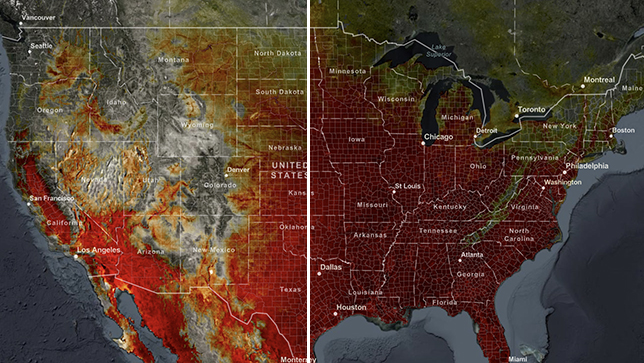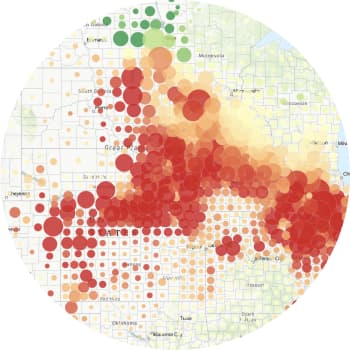Map assets and supply chains with geographic data to visualize localized, physical risks
Layer organizational information with authoritative spatial data from the ArcGIS Living Atlas of the World onto a map. This provides a complete view of climate risk based on historical and predicted extreme weather events, terrain and topography, and nearby infrastructure.










